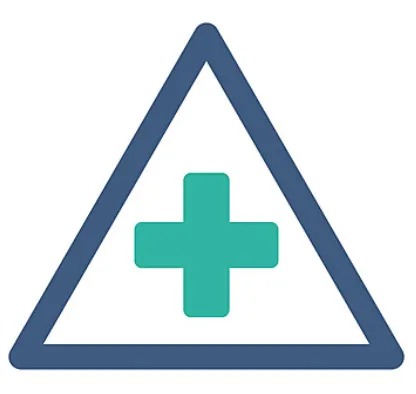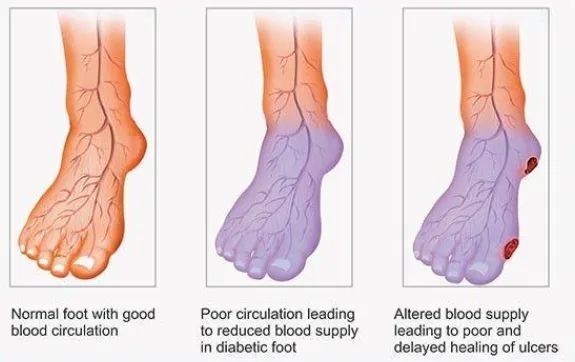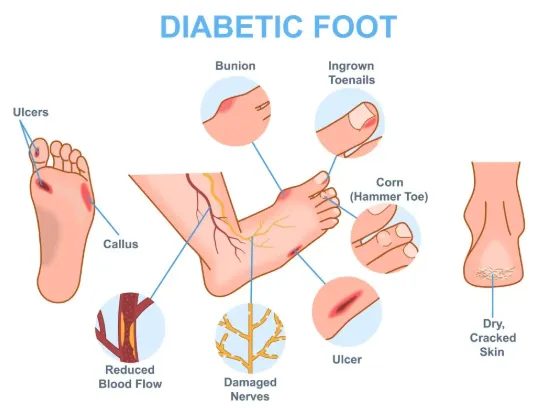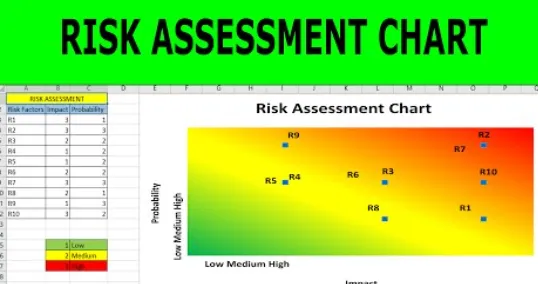Critical Safety Guide: When Toe Spacers Become Dangerous
Critical Safety Guide: When Toe Spacers Become Dangerous
Most articles about toe spacers focus on benefits and effectiveness. This one could save your limbs. For certain people, what seems like a harmless foot accessory can lead to ulceration, infection, and even amputation. Here's what you absolutely need to know before you try them.

The Safety Paradox: When "Harmless" Isn't Harmless
Here's something that might shock you: the risk-reward calculation for toe spacers is completely different depending on your health status.
For a healthy person, the worst-case scenario might be temporary discomfort or minor skin irritation. But for someone with certain medical conditions, the exact same device used in the exact same way can lead to non-healing wounds, serious infections, and limb-threatening complications.
This isn't medical fear-mongering—it's biological reality backed by clinical guidelines and case reports.
⚖️ The Risk Equation: While a healthy user risks minor discomfort, a high-risk user may risk ulceration, infection, and amputation for the same potential reward of symptomatic relief.
For Healthy People: The "Start Low, Go Slow" Protocol
If you don't have underlying medical conditions affecting circulation or sensation, toe spacers are generally considered low-risk. But "low-risk" doesn't mean "no-risk," and proper usage protocols can prevent problems.
The Gradual Introduction Method
Week 1: Start with just 30 minutes per day Week 2: Increase to 1 hour per day if comfortable Week 3+: Add 30-minute increments weekly as tolerated
🐌 Why Go Slow: Your feet need time to adapt to the new positioning. Tissues that have been compressed for years don't instantly adjust to being stretched.
Normal vs. Concerning Sensations
✅ Normal Adaptation Signs:
- Mild stretching sensation
- Muscle fatigue (like after a workout)
- Temporary soreness in previously inactive muscles
- Gradual improvement in comfort over time
🚨 Red Flag Symptoms:
- Sharp, significant, or increasing pain
- Any numbness, tingling, or burning sensations
- Skin discoloration, persistent redness, or marks that don't fade quickly
- Any signs of skin breakdown or injury
The Critical Footwear Rule
NEVER wear toe spacers inside narrow or constricting shoes. This is a fundamental safety rule that could prevent injury.
Here's why: if you force a spacer into a too-narrow shoe, you're not spreading your toes—you're concentrating dangerous pressure in a small space. This can lead to:
- Concentrated pressure points
- Skin breakdown
- Negation of any benefits
- Potential injury
👟 Safety Check: If your spacers don't fit comfortably inside your shoes with room to spare, you need different shoes or different spacers.
CRITICAL WARNING: High-Risk Medical Conditions
For certain populations, toe spacers aren't just ineffective—they're potentially catastrophic. The risk isn't theoretical; it's documented and serious.
🚨 ABSOLUTE CONTRAINDICATION: Peripheral Vascular Disease (PVD) / Peripheral Artery Disease (PAD)

What These Conditions Are: PVD and PAD involve compromised blood flow to your extremities. Your arteries can't deliver adequate oxygen and nutrients to your feet, making even minor injuries potentially devastating.
Warning Signs You Might Have PVD/PAD:
- Pain in legs or feet, especially with activity
- Feeling of coldness in feet
- Changes in skin color (pale, bluish, or reddish)
- Shiny, tight, or brittle-looking skin
- Weak or absent pulses in your feet
- Slow-healing cuts or sores
- Hair loss on legs or feet
Why Toe Spacers Are Dangerous: In healthy circulation, a small pressure spot might cause temporary redness that disappears quickly. In compromised circulation, that same pressure can rapidly become a non-healing ulcer.
The progression can be swift and devastating:
- Pressure point from spacer contact
- Tissue breakdown due to poor blood supply
- Non-healing ulcer formation
- Infection in damaged tissue
- Gangrene and potential amputation
🏥 Medical Reality: In people with PVD, minor pressure injuries that would heal in days for healthy individuals can become limb-threatening complications requiring amputation.
If you have or suspect PVD: Toe spacers should NEVER be used without explicit prescription, fitting, and monitoring by a vascular specialist or podiatrist who has assessed your circulatory status.
🚨 CRITICAL WARNING: Diabetes Mellitus (Especially with Neuropathy)

The Double Danger: Diabetes creates a perfect storm of risk factors:
- Peripheral neuropathy (loss of protective sensation)
- Poor circulation (similar to PVD)
- Impaired immune function (slower healing, higher infection risk)
- Altered wound healing (minor injuries become major problems)
The Neuropathy Trap: Diabetic neuropathy means you may not feel pain, pressure, or injury. A toe spacer could be rubbing, chafing, or creating dangerous pressure, and you might be completely unaware until serious damage has occurred.
The Clinical Reality:
- Diabetic foot ulcers are a leading cause of lower-limb amputations
- Minor injuries in diabetic feet can become chronic, non-healing wounds
- "Bathroom surgery" and self-treatment are strongly discouraged in diabetic foot care guidelines
📊 Sobering Statistics: People with diabetes are 10-20 times more likely to have a lower-limb amputation than people without diabetes, often starting from seemingly minor injuries.
Standard Diabetic Foot Care Guidelines:
- Daily foot inspection for any signs of injury
- No self-treatment of foot problems
- Immediate medical attention for any wounds or changes
- Professional foot care for nail trimming and callus management
Using toe spacers with diabetes runs directly contrary to these fundamental safety principles.
For comprehensive guidance on age-related risk factors and when to seek professional help, see our aging feet and professional consultation guide.
The IWGDF Exception: Professional Medical Use Only
The International Working Group on the Diabetic Foot (IWGDF) does mention toe spacers in their guidelines—but this requires careful interpretation.
What the guidelines actually say: Toe spacers may be considered for specific types of existing non-plantar diabetic foot ulcers under strict medical supervision as part of a comprehensive wound care plan.
What this means:
- ✅ Professional medical treatment of existing wounds
- ✅ Direct supervision by healthcare providers
- ✅ Specific clinical application with monitoring
What this does NOT mean:
- ❌ General consumer use for comfort or prevention
- ❌ Self-treatment of foot problems
- ❌ Over-the-counter use without medical evaluation
⚖️ Context Matters: Professional medical use under supervision is completely different from consumer self-treatment. Don't misinterpret medical guidelines as endorsement for unsupervised use.
Other High-Risk Conditions
Several other conditions require medical consultation before considering toe spacers:
Rheumatoid Arthritis and Inflammatory Conditions
- Altered immune function
- Fragile skin and tissues
- Medication effects on healing
- Complex foot deformities
Severe or Rigid Foot Deformities
- Limited ability to benefit from conservative measures
- Risk of forcing tissues into unnatural positions
- Need for surgical evaluation
History of Complex Foot Surgery
- Altered anatomy and circulation
- Scar tissue considerations
- Need for specialized medical guidance
Active Skin Lesions or Wounds
- Any open sores, cuts, or infected areas
- Risk of introducing bacteria or worsening existing problems
- Need for wound healing before considering spacers
👩⚕️ When in Doubt: If you have any chronic medical condition affecting your feet, circulation, or healing, consult a healthcare provider before using any foot device.
Red Flags: When to Stop Immediately and Seek Help
Even if you started using toe spacers safely, certain symptoms require immediate cessation and medical evaluation:
Immediate Stop Signs
🚨 Pain Changes:
- Sharp, significant, or increasing pain beyond mild muscle soreness
- Pain that worsens rather than improves over time
- Pain that interferes with normal activities
🚨 Neurological Symptoms:
- Any numbness, tingling, or burning sensations
- Changes in sensation (hot, cold, pressure sensitivity)
- "Pins and needles" feelings
🚨 Skin Problems:
- Blisters, cuts, or any skin breakdown
- Deep redness that doesn't fade quickly after removing spacers
- Skin discoloration (blue, white, or mottled appearance)
- Any signs of infection (warmth, swelling, discharge)
The Stress Fracture Risk
Here's something that might surprise you: at least one case has been reported where toe spacer pressure was thought to contribute to a stress fracture.
This underscores that toe spacers aren't entirely benign devices—they can exert significant mechanical forces. While stress fractures from toe spacers are rare, they remind us that these devices can cause more than just minor skin irritation.
⚠️ Force Reality: If a device can potentially contribute to a bone fracture, it's generating substantial mechanical forces. Respect that power and use devices appropriately.
Risk Stratification: Know Your Category

Understanding which risk category you fall into is crucial for safe toe spacer use:
🟢 Low Risk (Generally Safe with Proper Protocol)
- Healthy individuals without chronic medical conditions
- Good circulation and normal sensation
- No history of foot problems or slow wound healing
- Able to inspect feet daily and detect problems
🟡 Moderate Risk (Requires Caution and Monitoring)
- Minor circulatory issues
- History of foot problems but good healing
- Age-related changes but no major medical conditions
- Should consider professional consultation
🔴 High Risk (Medical Supervision Required)
- Diabetes, especially with neuropathy
- Peripheral vascular disease or circulation problems
- Immune system disorders
- History of slow wound healing or foot ulcers
⛔ Extremely High Risk (Generally Contraindicated)
- Active diabetic foot complications
- Severe peripheral vascular disease
- Current foot wounds or infections
- Significant neuropathy with complete loss of sensation
🎯 Safety First: When in doubt about your risk category, err on the side of caution and seek professional evaluation.
Creating Your Personal Safety Protocol
Before You Start
Health Assessment:
- Honest evaluation of your medical history
- Check for any circulation or sensation problems
- Consider professional consultation if uncertain about risk level
Baseline Documentation:
- Take photos of your feet before starting
- Note any existing problem areas
- Establish baseline comfort and function levels
During Use
Daily Monitoring:
- Inspect feet carefully before and after spacer use
- Check for any pressure marks, redness, or changes
- Monitor comfort levels and any symptom changes
Progressive Evaluation:
- Weekly assessment of benefits vs. any negative effects
- Adjustment of wearing time based on tolerance
- Documentation of any concerns or improvements
When to Seek Help
Planned Consultation:
- If you're in a moderate or high-risk category
- For custom fitting or specialized devices
- To integrate spacers into a comprehensive treatment plan
Urgent Consultation:
- Any signs of skin breakdown or injury
- Persistent or worsening pain
- Neurological symptoms
- Signs of infection or poor healing
The Bottom Line: Respect the Risk
Toe spacers can be valuable tools for foot health—but only when used appropriately by the right people under the right circumstances.
For healthy individuals: Follow proper protocols, monitor carefully, and use common sense.
For people with medical conditions: The risk-benefit calculation changes dramatically. Professional consultation isn't just recommended—it's essential for safety.
For everyone: Remember that "over-the-counter" doesn't mean "risk-free." Any device that can provide therapeutic benefits can also cause harm if used inappropriately.
⚖️ The Safety Mindset: The goal isn't to scare people away from potentially helpful tools—it's to ensure those tools are used safely by people who can actually benefit from them.
Coming up next: We'll explore the crucial distinction between normal aging changes and treatable foot problems, plus your complete guide to knowing when self-care isn't enough and professional help is essential.
Emergency Note: If you have diabetes, peripheral vascular disease, or any condition affecting circulation or sensation, do not use toe spacers without medical supervision. When in doubt, consult a healthcare provider before trying any foot treatment device.
Comments
Post a Comment